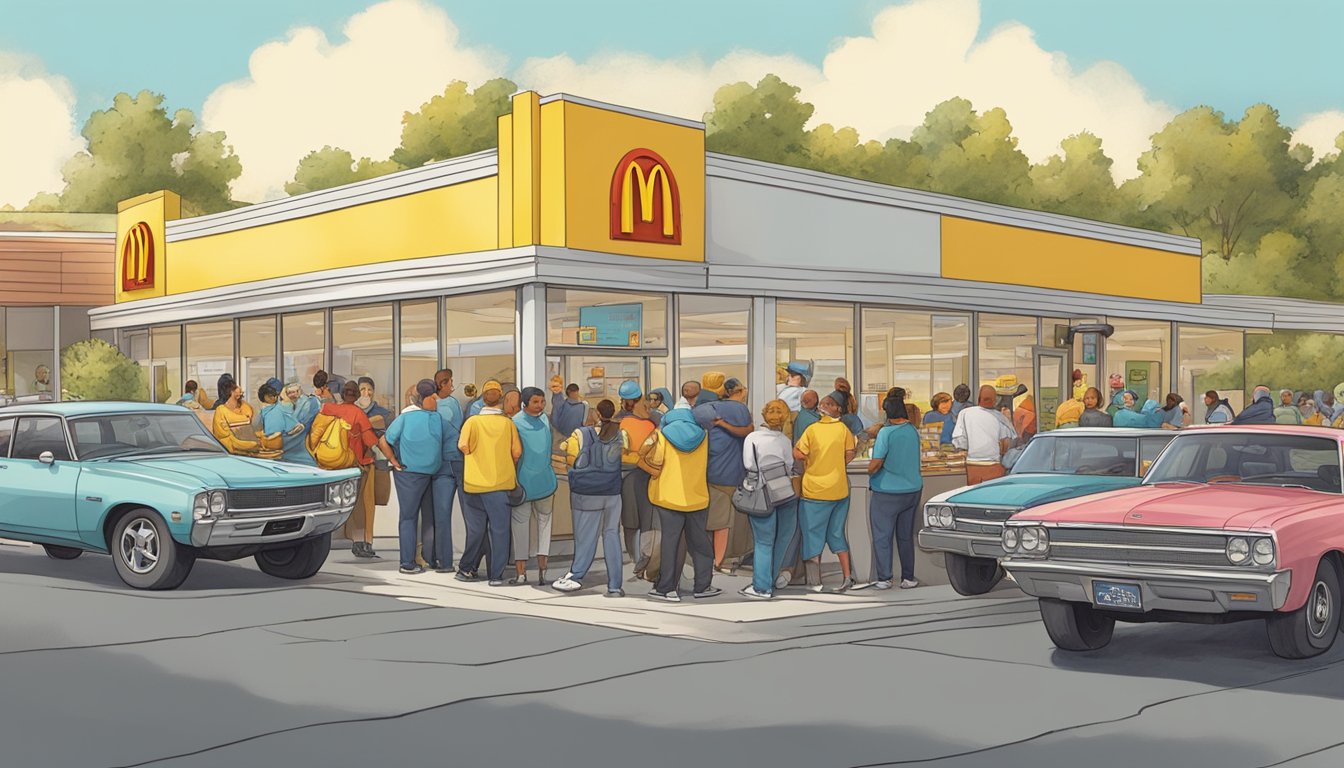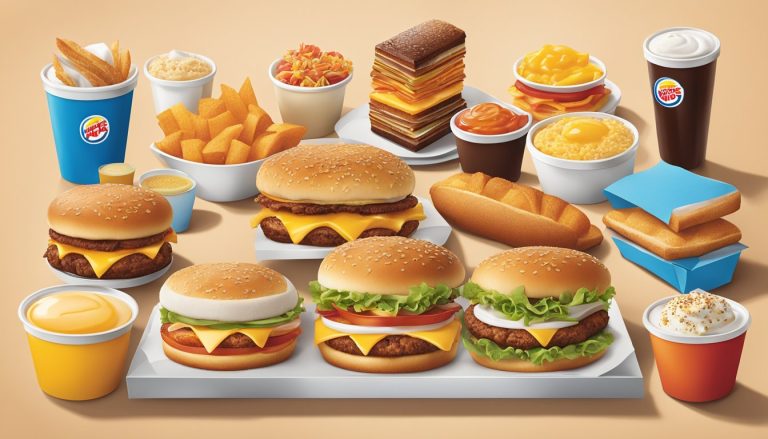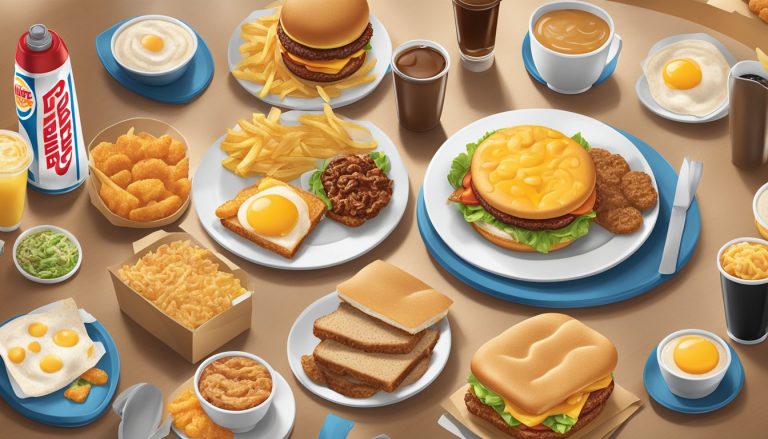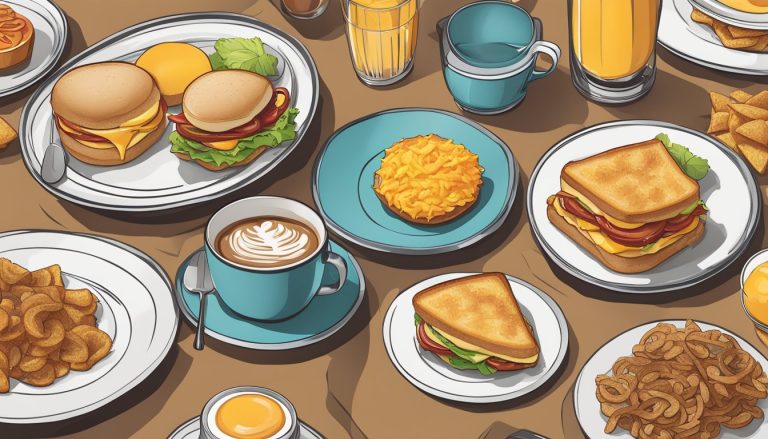Drive-thru culture revolutionized the fast food industry, transforming how Americans eat on the go. Burger King joined this trend in 1979 by introducing breakfast items to compete with McDonald’s, which had already established itself in the morning market. Burger King’s breakfast menu, while not as popular as some competitors, has been a staple offering for over four decades, reflecting the enduring appeal of quick, convenient meals.
The rise of drive-thrus coincided with America’s growing car culture and the post-World War II economic boom. Fast food chains capitalized on this shift, offering speedy service to time-pressed customers. Burger King’s introduction of breakfast items through drive-thrus aimed to capture a share of the lucrative morning rush, catering to commuters and families seeking quick meal options.
While Burger King’s breakfast hasn’t achieved the same level of success as its burgers, it remains a part of the company’s diverse menu. The persistence of BK’s breakfast offerings demonstrates the ongoing demand for fast food convenience in the morning hours, even as consumer preferences and health consciousness evolve.
History of Burger King

Burger King’s journey from a small Florida restaurant to a global fast-food empire spans decades of innovation, expansion, and changing ownership. The chain’s history is marked by iconic menu items and strategic business moves.
Founding of Insta-Burger King
In 1953, Keith J. Kramer and Matthew Burns established Insta-Burger King in Jacksonville, Florida. The restaurant featured a unique cooking device called the “Insta-Broiler.”
James McLamore and David Edgerton discovered the Insta-Burger King concept in 1954. Seeing its potential, they opened the first franchise in Miami, Florida.
The pair made significant improvements to the original cooking method and restaurant operations. Their success led them to purchase the entire Insta-Burger King chain in 1959.
The Birth of the Whopper
McLamore and Edgerton introduced the Whopper in 1957. This signature sandwich quickly became Burger King’s hallmark item.
The Whopper’s success helped fuel the chain’s rapid expansion. It featured a quarter-pound beef patty, mayonnaise, lettuce, tomatoes, pickles, and onions on a sesame seed bun.
Burger King’s flame-broiling technique set it apart from competitors. This cooking method became a key part of the brand’s identity and marketing.
Global Expansion and Franchising
Burger King’s growth accelerated in the 1960s through aggressive franchising. The chain expanded beyond Florida, opening locations across the United States.
In 1963, Burger King opened its first international restaurant in Puerto Rico. This marked the beginning of its global expansion strategy.
By 1967, Burger King had grown to 274 restaurants in the United States. The chain continued to expand internationally, entering markets like Canada.
In 1969, the first Canadian Burger King opened in Windsor, Ontario. Alberta soon followed, with locations opening in Calgary and Edmonton.
Ownership Changes and Pillsbury
The Pillsbury Company acquired Burger King Corporation in 1967. At the time, BK was valued at approximately $18 million.
Under Pillsbury’s ownership, Burger King experienced significant growth. The company focused on expanding the franchise network and improving operations.
Pillsbury faced challenges adapting Burger King’s menu to changing consumer tastes. In 1979, the company began planning a breakfast menu to compete with McDonald’s.
However, Burger King’s flame broilers posed difficulties in creating breakfast items. This technological limitation initially hampered the chain’s ability to diversify its menu offerings.
Development of Drive-Thru Services
Drive-thru services revolutionized the fast food industry, offering unprecedented speed and convenience. The evolution of this model shaped modern dining habits and competitive strategies among major chains.
The Evolution of Drive-Thrus
Drive-thrus emerged in the late 1940s, with In-N-Out Burger pioneering the concept. Banks had previously offered drive-up services, but food establishments quickly adapted the idea.
The post-World War II economic boom fueled drive-thru popularity. As American lifestyles became faster-paced, the appeal of quick, on-the-go meals grew.
Major fast-food chains embraced drive-thrus in the 1960s and 1970s. This expansion coincided with increased car ownership and suburban sprawl.
Drive-thrus now extend beyond fast food. Pharmacies, liquor stores, and even wedding chapels offer drive-up services.
Burger King’s Drive-Thru Innovation
Burger King entered the drive-thru scene later than some competitors but made significant contributions. The chain’s “Burger King Drive Inn” concept debuted in the 1970s.
BK focused on enhancing the drive-thru experience. They introduced dual-lane systems to reduce wait times and improve efficiency.
The company also leveraged its mascot, the King, in drive-thru advertising. This helped create a memorable brand identity for their drive-up windows.
Burger King’s breakfast menu became a key part of their drive-thru strategy. It catered to commuters seeking quick morning meals.
Competitive Landscape
McDonald’s dominated the drive-thru market, with 70% of pre-pandemic revenues coming from this channel. Their success spurred other chains to innovate.
Fast-food giants invested in technology to streamline orders and reduce errors. Digital menuboards and automated voice systems became common.
Drive-thru speed became a crucial competitive factor. Chains regularly conducted time studies to optimize their processes.
Some brands, like Chick-fil-A, gained reputations for exceptional drive-thru service. This focus on quality helped differentiate them in a crowded market.
Burger King’s Menu and Offerings
Burger King’s menu features a diverse array of fast food options, from classic flame-grilled burgers to breakfast sandwiches and plant-based alternatives. The chain caters to various tastes and dietary preferences, offering both indulgent and health-conscious choices.
Signature Items
The Whopper stands as Burger King’s iconic offering, a quarter-pound flame-grilled beef patty topped with fresh lettuce, tomatoes, mayonnaise, pickles, and onions on a sesame seed bun. This signature burger has been a menu staple since 1957.
Burger King’s fries complement their burgers, known for their crispy exterior and fluffy interior. The chain also offers chicken options, including the Original Chicken Sandwich and Chicken Fries.
For dessert lovers, BK serves soft-serve ice cream cones, sundaes, and shakes in various flavors.
Breakfast Options and the Croissan’wich
Burger King’s breakfast menu, typically available from 6:00 AM, includes a range of affordable options priced between $1.69 and $8.99. The Croissan’wich is a popular choice, featuring eggs, cheese, and a choice of sausage, bacon, or ham on a flaky croissant.
Other breakfast items include:
- Breakfast Biscuit Sandwiches
- Pancake & Sausage Platter ($3.69)
- Hash Browns
- BK Café Coffee ($2.69)
Breakfast combos are also available, pairing sandwiches with hash browns and a drink.
Plant-Based and Health Conscious Options
Burger King has expanded its menu to include plant-based and healthier alternatives. The Impossible Whopper, made with a plant-based patty, caters to vegetarians and those looking to reduce meat consumption.
For health-conscious customers, BK offers:
- Garden Side Salad
- Chicken Garden Salad
- Apple Slices (as a side option)
- Oatmeal (part of the breakfast menu)
These options provide lower-calorie alternatives to traditional fast food fare. Burger King also allows customization of menu items, enabling customers to adjust toppings and portion sizes to suit their dietary needs.
Marketing and Brand Identity
Burger King’s marketing efforts and distinctive brand identity have played a crucial role in establishing its position in the fast food industry. The company has utilized creative advertising campaigns and a memorable mascot to connect with customers.
Advertising Campaigns
Burger King’s advertising campaigns have often pushed boundaries and garnered attention. The “Have It Your Way” slogan, introduced in the 1970s, emphasized customization and customer choice. This message resonated with consumers and became a cornerstone of BK’s brand identity.
In recent years, Burger King has embraced digital marketing. A notable campaign involved encouraging customers to download the BK app, drive to a McDonald’s, and then return to Burger King for a discounted Whopper. This bold strategy showcased BK’s willingness to directly challenge competitors.
The brand has also focused on product innovation in its marketing. Campaigns highlighting new menu items or improvements to existing products have helped keep the brand fresh and relevant in consumers’ minds.
The Role of the Burger King Mascot
The Burger King mascot, a character wearing a plastic king mask, has been a significant part of the brand’s visual identity. Introduced in 2003, the “King” became a pop culture icon and featured prominently in television commercials.
The mascot’s creepy yet humorous demeanor created memorable advertising moments. While divisive, the character succeeded in generating buzz and brand recognition. BK has periodically retired and reintroduced the King, adapting his use to align with current marketing strategies.
In 2021, Burger King unveiled a brand refresh, updating its logo, packaging, and overall visual identity. This modernization aimed to reflect the company’s focus on food quality and sustainability while maintaining its distinctive brand personality.
Cultural Impact and Community Involvement

Burger King’s breakfast offerings and drive-thru innovations have profoundly shaped modern eating habits and community dynamics. These changes extend beyond mere convenience, influencing lifestyles and social responsibility initiatives.
Promoting Convenience and Lifestyle Changes
Burger King’s drive-thru breakfast options have transformed morning routines for millions. The ability to grab a quick meal on-the-go has enabled busier schedules and later wake-up times for many workers and students.
This shift has impacted traffic patterns, with increased morning congestion around popular BK locations. Some cities have adjusted traffic light timing to accommodate the surge of breakfast commuters.
The National Restaurant Association reports that drive-thru breakfast sales have grown by 12% annually since 2020, largely driven by chains like Burger King. This trend has pushed competitors to expand their own breakfast menus and drive-thru capabilities.
Community Engagement and Contributions
Burger King has leveraged its breakfast popularity for community outreach. The chain regularly hosts “Coffee with a Cop” events, where local police officers meet residents over free BK coffee and croissants.
BK’s annual “Benefit Breakfast” program donates a percentage of morning sales to local schools and youth organizations. In 2024, this initiative raised over $3 million for education programs nationwide.
The company also partners with food banks to distribute excess breakfast items, reducing waste and supporting those in need. This program provided over 500,000 meals to food-insecure individuals in 2024.
Burger King’s breakfast-focused community involvement has strengthened its brand image and fostered goodwill in many neighborhoods. These efforts have helped balance concerns about the health impacts of fast food consumption.
Challenges and Controversies

Drive-thru culture faces several challenges and controversies. Fast-food chains like Burger King must navigate these issues to maintain their popularity and profitability.
Health concerns top the list of controversies. Critics argue that drive-thrus contribute to unhealthy eating habits by providing quick access to high-calorie, low-nutrient foods.
Environmental impact is another significant issue. Idling cars in drive-thru lanes contribute to air pollution and increased carbon emissions.
Traffic congestion near popular drive-thrus can cause problems for local communities. Long queues of vehicles often spill onto main roads, creating safety hazards and frustrating nearby residents.
Some municipalities have considered banning or restricting new drive-thru developments due to these concerns. This poses challenges for fast-food chains looking to expand their operations.
Food quality and accuracy of orders can be compromised in the rush to serve customers quickly. This can lead to customer dissatisfaction and potential food safety issues.
Labor practices in fast-food drive-thrus have also come under scrutiny. Workers often face high-pressure environments and challenging working conditions.
Despite these challenges, drive-thrus remain popular. Fast-food chains continue to innovate, seeking solutions to address these concerns while meeting customer demands for convenience and speed.
The Future of Fast Food and Drive-Thrus
Drive-thru technology is rapidly evolving to enhance customer experiences. Advanced AI systems are being implemented to streamline ordering processes and reduce wait times.
Voice recognition software and digital menu boards are becoming standard features. These allow for more personalized interactions and targeted promotions based on customer preferences.
Fast-food chains are investing in mobile apps and loyalty programs. These digital tools enable customers to place orders in advance and skip lines, further boosting convenience.
Some restaurants are experimenting with multiple drive-thru lanes. This includes dedicated lanes for mobile order pickup, improving efficiency during peak hours.
Energy efficiency is gaining focus in drive-thru design. KFC recently opened a solar-powered drive-thru in California, potentially saving $11,000 annually in energy costs.
Contactless payment methods are becoming widespread. This shift accelerates transaction speeds and addresses hygiene concerns.
Key innovations:
- AI-powered ordering systems
- Voice recognition technology
- Digital menu boards
- Mobile order lanes
- Sustainable energy solutions
- Contactless payments
As technology advances, drive-thrus will likely become more automated. However, the human touch remains important for customer service and problem-solving.
Fast-food chains are balancing innovation with reliability. While embracing new technologies, they must maintain the quick service and consistency customers expect.




